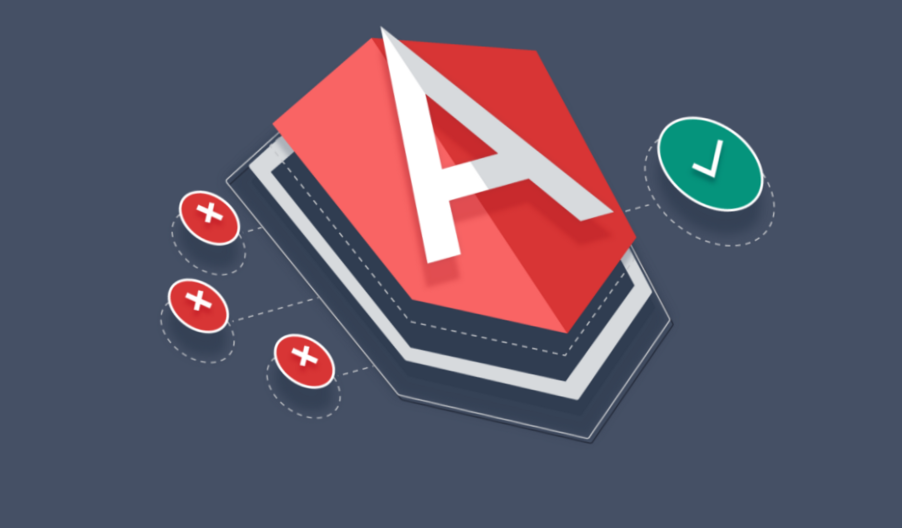Angular
Angular (formerly known as Angular JS) is a script-based web application framework that supports comprehensive development for building all types of web applications. It helps in creating Single Page Application (SPA) based entirely on the concept of components. Google owns Angular and released its stable version on September 14, 2016.Google tends to release a major version of Angular every six months.
Angular has become the most popular framework for creating mobile and desktop web applications today. It comes with different features. Versions above 2.0 are called Angular. Angular 1.0 is called Angular JS. The latest version of Angular comes with all the features you can use to build complex and sophisticated desktop and mobile web applications. Some of the features of Angular are components, styles, directives, dependencies, HTTP services, channels, etc.
MVC and Angular
MVC is a code pattern with a long history, used by many frameworks, both front-end and back-end. In Angular, web applications are divided into the following three parts:
Model
The pattern represents the data that populates the web page. This data can optionally be stored in a database. For example, the user profile model will contain the user data model in memory which will be updated through the model and API calls to the web server.
View
Concept is the user interface (user interface) or what you see in the browser. It represents model data to the user in a visual format.
Controller
A logical controller for web applications. When a user saves data to a form, they call an API to update the data on the server. When the user refreshes the page, an API call retrieves this data from the server and updates the view with the new data.
Why Angular?

JavaScript is the most commonly used client-side scripting language. It is written in HTML documents to allow interaction with web pages in many unique ways. As it is easy to learn the language with full support, it is well suited for creating modern applications.
But is JavaScript good for building single-page applications that require modularity, testing, and developer productivity? Maybe not. Nowadays, we have different systems and libraries designed to provide another solution. When it comes to front-end web development, Angular solves many, if not all, of the problems developers face when using JavaScript alone.
Features in Angular
Cross-platform
With Angular, you can create Progressive Web Applications (PWAs). PWAs provide an app-like experience to the public using modern web design. Depending on your needs, you can deploy both native and advanced applications. A mobile SDK called Ionic can take your apps to the App Store and deliver them to the mobile web as a PWA. Also, you can create applications for desktop with Angular
great speed and good performance
Angular defines the modern JavaScript virtual machine by turning patterns into code. So your hand-written code can be based on a productive process. The best thing about Angular is that you can provide the code in HTML and CSS and have the first idea of the application in any platform like NodeJS, .Net, PHP, etc.
The installation time of Angular applications is faster than any other framework in the industry. It carries Cheetah speed on every new hardware router. In addition, the code is automatically divided based on the input and input required by the user.
Angular tools for everyone
Angular is a front-end magic platform that helps not only in creating awesome applications but also in creating advanced features to improve user experience. Angular’s API is so intelligent that developers can create complex scenarios and scenarios with minimal code.
Additionally, with smart unit testing frameworks like Jasmine and Karma, you can fix broken code at any time. Angular has more than 11 built-in test modules to ensure error-free code. Building scalable applications is one of Angular’s strengths. Anyone, including those with special rights, can use accessible tools.
Angular technology features
MVC Architecture
MVC stands for Model-View-Controller. Application data is managed through models and views that manage the presentation of data. When the controller acts as a link between the view and the form layer. Often in MVC architecture you can separate the application properly and write the code to connect it. However, in Angular; Development is simply divided into applications in MVC and it does others in itself. It saves a lot of code time.
Two-way data connection is good
The most effective feature of Angular is its two-way data binding mechanism. Observations represent the Model layer directly and they are closely related to each other. If you make changes to the model, users can see it automatically in the model view. Therefore, it reduces the development time significantly.
CDK and angular elements
Angular, as a leading front-end language, has updated its component development kit (CDK) with version enhancements. New navigation and virtual scrolling are key features of the latest Angular CDK. It helps with dynamic loading and DOM loading to generate large lists of data with high performance. You can import a ScrollingModule or a DragDropModule into the application. Some of the main features of DragDropModule are organized into list, free drag, preview and storage. Also, it helps to rearrange the array (moveItemInArray) and transfer items between arrays (transferArrayItem)
Document Object Model
DOM (Document Object Model) treats an XML or HTML file as a tree type where each node represents a part of the document. Angular uses the DOM every day. Note that ten of the HTML pages have been updated. Instead of updating the updated ones, it will replace the entire HTML tag tree.
Type script
TypeScript defines a type of JavaScript, which helps users write JavaScript code that is less complicated to understand. All TypeScript code is compiled with JavaScript and can run on any platform. TypeScript is no longer required to create Angular applications. However, it is highly recommended because it provides a high level of syntactic structure, while making the main code less difficult to understand and maintain.
Data connection
Linking data is a method that allows users to modify the settings of a web page using an internet browser. It uses powerful HTML without the need for complex scripting or programming. Data capture is used on Internet pages with interactive features, such as calculators, tutorials, forums, and games. It also allows high-quality display of web pages when those pages contain large amounts of data
two-way connection
Two-way data integration means that changes made to our model are propagated to that area in the view, and any changes made to the view are immediately updated to the underlying object data.
Bidirectional data binding is useful in data entry models. Every time the user makes a change to the form field, we want to update our model. Similarly, when we update the model with new data, we also need to update the hypothesis
Two-way data binding is nothing but property binding and program binding put together. Linking property is one way from property to view. Coordinating events is one way of looking at the area. If we combine the two, we get a two-way connection.
From properties (Type Script code) to types (HTML view) such as strings, property bindings.
In Angular bidirectional binding, these two indirect bindings are combined to create a two-way data structure between the component class and its model. So bidirectional clutches do these two things –
If a property of a component is modified, this change is transmitted to the view.
Similarly, conceptual change is reflected in the associated resources. You can see that the first one is the property binding while the second one is the event binding and the second combination is bidirectional binding in Angular.







